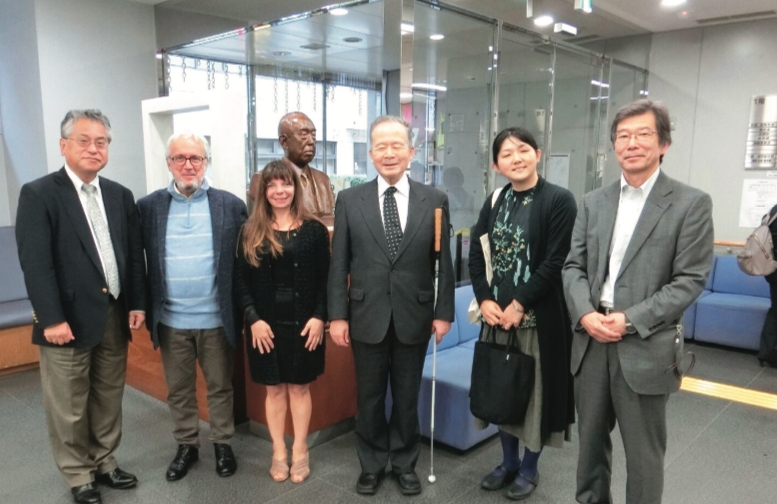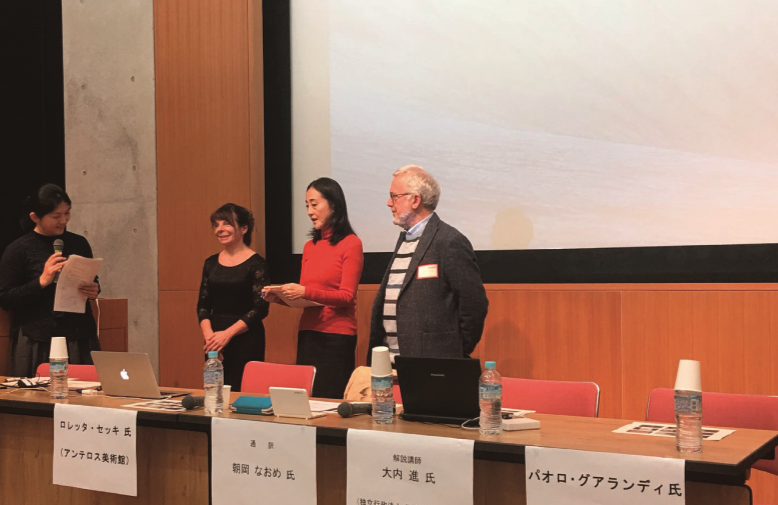Last October, the University of Yamanashi, in Japan, invited the tactile museum Anteros to a seminar organized by Prof. Hiroko Takesue and dedicated to the cognitive and pedagogical functions of aesthetic education in the presence of visual impairment. Addressed to leaders and creators of the method of translation and transmission of paintings for blind and visually impaired people, the seminar was based on theory and practice to demonstrate the cognitive potential of aesthetic education for people living with vision loss.

The forum, held at the Kofu Museum, included a seminar and a workshop: the seminar was presented by me, Loretta Secchi, and the lab was offered by Prof. Paolo Gualandi with the aim of demonstrating the techniques of design and construction of a bas-relief for the translation into plastic of the formal values of a painting. The collaboration with the Japanese researchers dates back to 2001, during the first trip to the NISE (National Institute of Special Education) in Yokosuka dates back to 2002. At the time, the goal was to export and adapt our pedagogical and didactic methods to the perceptive and cognitive needs of Japanese culture, to allow an extension of meaning useful to the daily autonomy of blind people and to the structuring of their concrete, abstract and symbolic thinking. From that meeting with Prof. Susumu Oouchi, Director of Education for People with Visual Impairment at NISE's Department for Research, and his collaborators, was born a partnership that still lives today giving results of value. In the following years, an affinity between special education in Japanese and Italian arts became more and more defined. A study then began on the constants and variables of the techniques of tactile exploration of bas-reliefs that translate paintings into form. This allows the examination of the functions of guided tactile reading, and the development of techniques of haptic perception differentiated and adapted to the specific cognitive needs of Italian and Japanese blind people. Between 2003 and 2006, with the collaboration of sculptors and professors Gualandi Paolo and Marco Marchesini, we produced the plastic translations of two famous prints taken from the Ukyio-e genre: The Great Wave by Katsushika Hokusai and Seven Women Applying Make-up in the Mirror by Kitagawa Utamaro

Since 2002, important pieces of our collection of bas-relief paintings have been acquired in Japan. Years of collaboration led to significant results, including a specialized joint publication, published by the NISE, allowing us all, professionals of the tactile museum Anteros at the Institute for the Blind Francesco Cavazza, to learn and share through dialogue and acceptance, otherwise difficult to experience. This dialogue deepened the love for the land and the culture of Japan and gave birth to the tactile museum Anteros of Tokyo, a significant twinning, which also offers valuable contacts with the National Braille Library in Tokyo, where there recently was an exhibition of plastic models reproducing in a reduced scale the civil and religious architecture of the Rising Sun. Inside this exhibition the relief of the Last Supper by Leonardo was also exhibited, done several years ago by our tactile museum Anteros. The visit to the Tokyo National Museum and the scientific comparison with its educational services has taught us an esthetic based on the refinement of sensibility and on the cognitive use of metaphors, also from a teaching point of view. During the trip to Japan we gathered the result of years of joint study with a culture that rigorously examines the results of applied research. In those intense days a typhoon shook Japan, the strength of the elements felt even in futuristic Tokyo, once ancient Edo.

.png)



.png)